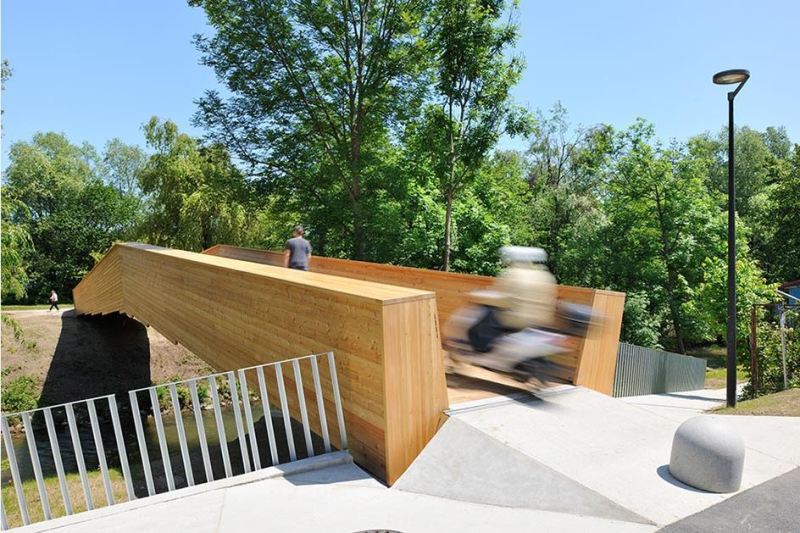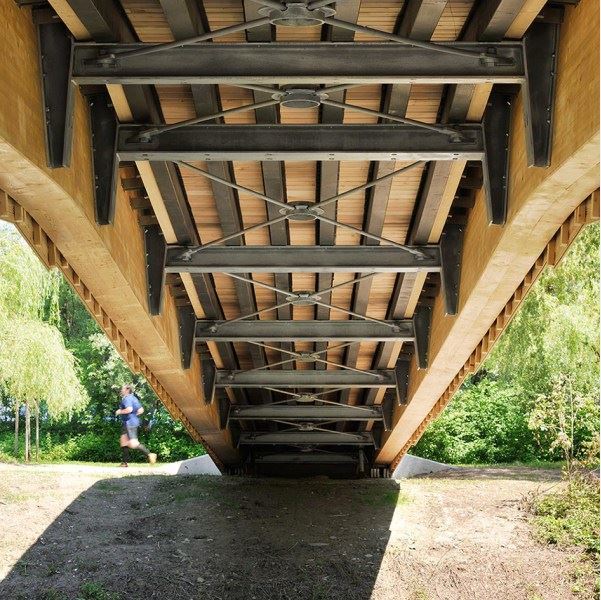I have an interesting pedestrian bridge I might design. It is similar structure like this one.
It consists of two main glulam beams, connected with steel U-frames at 4 meters. Glulam beams are a bit tilted outwards, making kind of a V-shape (steel frames follow this shape). Main glulam beams are asymetrically pitched cambered, simply supported, span is 40m. Width of the bridge is approx. 3 m. There is steel bracing beneath the deck between the U-frames.
My main concern is lateral torsional stability of the main beams as they are laterally supported with rather elastic steel frames and tilted outwards. I figured I would model the beams in FEM software with surface elements and steel with line elements. Then I would do a nonlinear stability analysis to see how the beams buckle. Then I would use effective length between buckles to design per code (Eurocodes). I have limited experience with nonlinear analysis (or linear buckling analysis for that matter) so any guidance for design process including stability would be very welcome.
It consists of two main glulam beams, connected with steel U-frames at 4 meters. Glulam beams are a bit tilted outwards, making kind of a V-shape (steel frames follow this shape). Main glulam beams are asymetrically pitched cambered, simply supported, span is 40m. Width of the bridge is approx. 3 m. There is steel bracing beneath the deck between the U-frames.
My main concern is lateral torsional stability of the main beams as they are laterally supported with rather elastic steel frames and tilted outwards. I figured I would model the beams in FEM software with surface elements and steel with line elements. Then I would do a nonlinear stability analysis to see how the beams buckle. Then I would use effective length between buckles to design per code (Eurocodes). I have limited experience with nonlinear analysis (or linear buckling analysis for that matter) so any guidance for design process including stability would be very welcome.


